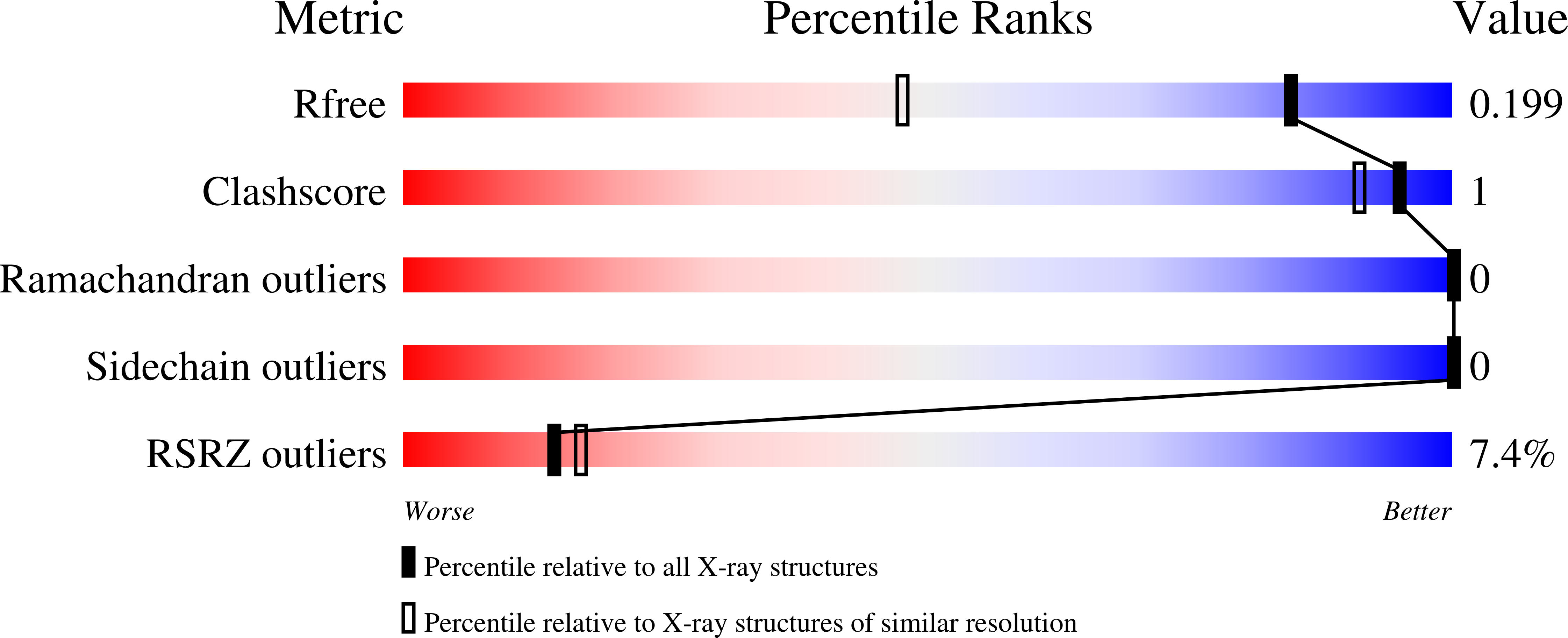Divalent cations influence the dimerization mode of murine S100A9 protein by modulating its disulfide bond pattern.
Signor, L., Paris, T., Mas, C., Picard, A., Lutfalla, G., Boeri Erba, E., Yatime, L.(2020) J Struct Biol 213: 107689-107689
- PubMed: 33359632
- DOI: https://doi.org/10.1016/j.jsb.2020.107689
- Primary Citation of Related Structures:
6ZDY, 6ZFE - PubMed Abstract:
S100A9, with its congener S100A8, belongs to the S100 family of calcium-binding proteins found exclusively in vertebrates. These two proteins are major constituents of neutrophils. In response to a pathological condition, they can be released extracellularly and become alarmins that induce both pro- and anti-inflammatory signals, through specific cell surface receptors. They also act as antimicrobial agents, mainly as a S100A8/A9 heterocomplex, through metal sequestration. The mechanisms whereby divalent cations modulate the extracellular functions of S100A8 and S100A9 are still unclear. Importantly, it has been proposed that these ions may affect both the ternary and quaternary structure of these proteins, thereby influencing their physiological properties. In the present study, we report the crystal structures of WT and C80A murine S100A9 (mS100A9), determined at 1.45 and 2.35 Å resolution, respectively, in the presence of calcium and zinc. These structures reveal a canonical homodimeric form for the protein. They also unravel an intramolecular disulfide bridge that stabilizes the C-terminal tail in a rigid conformation, thus shaping a second Zn-binding site per S100A9 protomer. In solution, mS100A9 apparently binds only two zinc ions per homodimer, with an affinity in the micromolar range, and aggregates in the presence of excess zinc. Using mass spectrometry, we demonstrate that mS100A9 can form both non-covalent and covalent homodimers with distinct disulfide bond patterns. Interestingly, calcium and zinc seem to affect differentially the relative proportion of these forms. We discuss how the metal-dependent interconversion between mS100A9 homodimers may explain the versatility of physiological functions attributed to the protein.
Organizational Affiliation:
Univ. Grenoble Alpes, CEA, CNRS, IBS, F-38000 Grenoble, France.

















